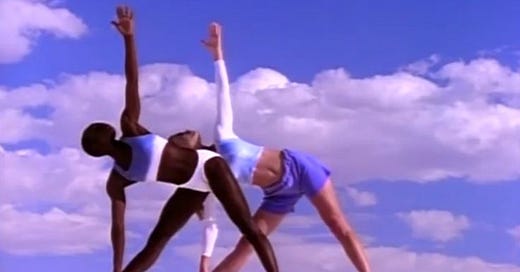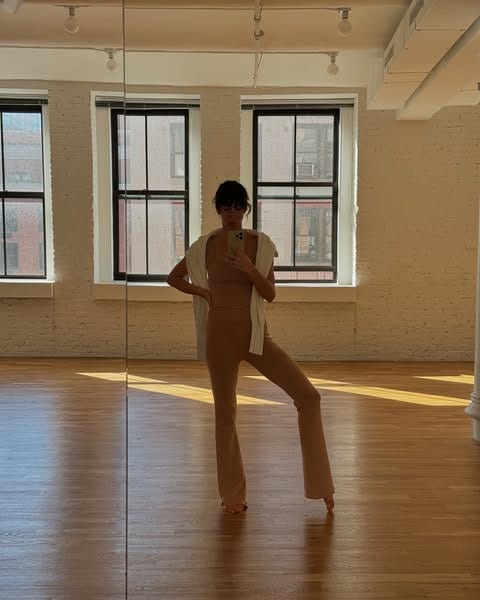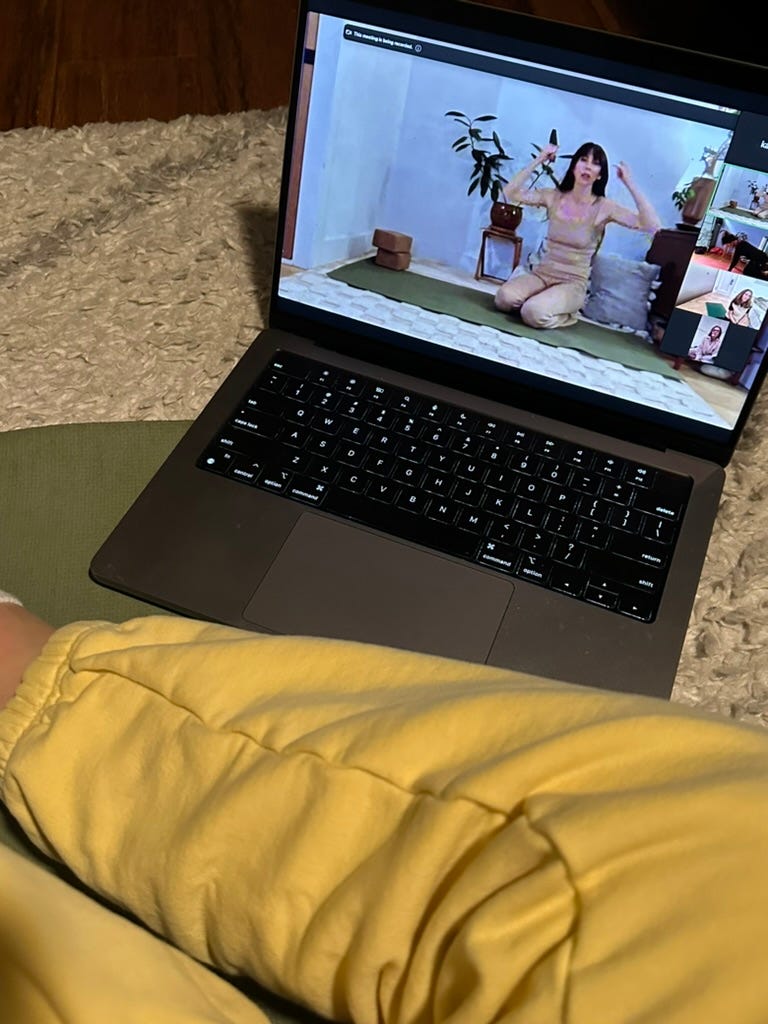It was roughly three years ago when the word “fascia” first entered my ears. Ah, I remember it like it was yesterday. Just kidding. If I had to guess, it was tucked into some detoxification monologue delivered by a white woman on Instagram Reels. Sounds about right.
For a while, everything I learned about ‘fascia’ was against my own will. From the social media videos and trendy headlines, I could piece together a vague understanding of this muscular-ish, stretching-related anatomical thing. Truthfully, I didn’t dig much deeper on purpose. It seemed like one of those things that maybe I didn’t actually need to know. Ignorance is bliss, after all. But on the other side of the ignorance-is-bliss coin is what is meant for you won’t pass you by. I guess fascia was meant for me, because it wouldn’t leave me alone.
This fall — and I don’t like to admit this — I found myself in an exercise rut. That will confuse a lot of people close to me. I know, guys. But just because a person goes to the gym nearly everyday doesn’t mean they do anything of much value there. I started to form this habit where I would simply walk on the treadmill everyday and either watch Housewives or scroll through my emails or try to figure out the Wordle for an embarrassing amount of time. This is all fine and good, but I typically like working out, and suddenly the muscles I spent a lot of time flexing no longer flexed quite like they once did. So I decided to follow my own advice and get serious about working out in the form of a calendar with diversified exercise formats.
Usually when I find myself in an exercise rut, I can snap back into my previous routines relatively quickly. But this time, the workouts I once loved didn’t feel so great in my body. The muscles weren’t… muscling. It took going to a one-on-one Pilates session (really wise investment for any frequent exercisers, might I add) to understand that my body was stuck in the unstretched cycle and therefore everything I was doing was uncomfortable and wrong.
This was all a long-winded way of saying, I was forced to prioritize stretching. Ugh. Do you know how easy it is to simply be DONE at the gym when the workout is over? The extra 5-10 minutes on the mat are where I get sucked into the vortex that is my phone. Suddenly, 30 minutes have passed and I’m hundreds of Subway Takes deep, still pigeon-posing on the first leg.
But here’s where it gets good. I found a stretching hack. Actually two stretching hacks, and they’re not so much hacks as they are legitimate forms of movement that have muscular elongation benefits.
Hot yoga. Sorry, I just want to say it again, calling hot yoga a ‘stretching hack’ was a complete joke. Anyways. I’m now mandating a once per week hot yoga session. Even though I controversially don’t loooove yoga, I do find that I feel very good after a solid flow, especially if said flow is heated. I suffer from a productivity-addiction, so the way I frame this to myself is that I’m getting a) sauna benefits and b) stretching / movement benefits all in one hour-long class. Not a bad deal.
Fascia Flossing. This started as an excuse to go to the newly reopened Sky Ting studio in Noho without having to do a more traditional yoga class. But after the first class, I became hooked. It’s somewhere in-between stretching and working out, in my very unprofessional opinion, and the next day I felt that familiar soreness, like after a really good massage.
I’m not going to do the class — and its physiological benefits — any justice by attempting to explain it, so here’s where I’ll turn it over to my wonderful instructor, Bonnie. I’ll meet you back at the end with some final stretching thoughts and companion content recommendations.
Bonnie Crotzer is the founder of The Floss™, a platform of classes that help re-sculpt the body’s foundational structure through her signature Fascia Flossing™ technique. She’s been dancing since she was a kid, but even the years of yoga teaching and Pilates practicing didn’t fully alleviate the stress her muscles had accumulated. It wasn’t until she learned about fascia, and subsequently creating her ‘flossing’ technique, that she felt at home in her own body. I’ll let her explain the rest.
Let’s start off with the very basics. What is fascia?
Fascia is connective tissue. An endless fabric of varying properties and thicknesses, organizing our form. It’s the tissue that connects all other tissues, present as the main building material of our bodies from inception to the day we pass, lining the skin and joining (interweaving?) everything, even on the most microscopic level.
Toes to your nose. Bones down to your cells, fascia is allllll over your insides. It wraps around, permeates and morphs into our organs, muscles, bones, tendons, ligaments, nerves, brain matter etc. The fascia is continuous and ubiquitous, as Joanne Avison says. It is the organizing principle of the body.
How is it different from muscle and tissue?
Fascia being the foundational material of all tissues in the body, it creates (this is not a perfect metaphor but gives you the idea) an internal scaffolding. Fascia encases our muscles but it goes deeper. It acts as a fractal system. Picture a piece of citrus: you have the outer encasing, the rind — let’s call that the whole thigh being wrapped by fascia. Then you have the citrus segments/slices, call that the various muscles within the thigh. Those are encased within their own fascia. Then you have those little lobules that hold the juice, that would be the fascia that wraps each individual muscle fiber — tiny!
But the gross mimics the minute. Muscle is made up mostly of special and large red blood cells. The fascia creates the format in which those cells are organized and glued together.
I remember you talking about meridians [in your flossing class], which is familiar to me from reflexology and acupuncture. Are there roots in Traditional Chinese Medicine?
Yes, great memory and great question. Traditional Eastern Medicine devotes one of the main meridians to fascia, it’s called San Jiao or translated to Triple Burner. The original practitioners of this medicine had a deep awareness and understanding of the significance of fascia.
Currently, some doctors, scientists, anatomists and acupuncturists believe that based on our embryology there are fascial chains or channels that are relative to what we call a meridian today — that the Qi flows is a very specific and organized manner in the body via the fascial network. Fascia highly conductive (made most of collagen which is crystal-like) and conducts electricity that scientists can measure the current following through it. It’s even piezoelectric, meaning it generates its own energy.
Ok cool. Now it’s time: what is flossing?
Fascia flossing is a technique that involves contracting and elongating muscles and fascia simultaneously. It's a low-impact workout that can help improve posture, renew connective tissue, and benefit organ health. Engaging while you elongate, flossing, means you are working on the fabric of your foundation, your fascia.
How did you get the idea for it?
This concept (in the trainer PT world it is called an eccentric contraction) has traces back to a weight lifter of the 1930’s named Charles Atlas. I learned from my former teacher, Bob Cooley, who is a genius at transforming fascia. I then combined these concepts with my movement background in dance, yoga, Pilates, etc. to create the movement practice that I call Fascia Flossing(™).
Do you consider it to be exercise?
Yes! It’s a low impact workout. And post-practice, you feel like you have had a great workout and massage when you are done.
When you’re not flossing, what exercise are you doing?
Dancing, swimming, hiking, light jogging, Pilates when I am leading retreat with my besties Linnea and Colleen who teach the best Pilates class!
What are the biggest misconceptions about fascia?
The biggest misconception I have heard out there on the internet is that it’s a disease! Mamma Mia! As if we should get rid of the most foundational aspect of our body’s architecture.
There is also misconception around fascia’s complexity, a wide reaching misunderstanding is that fascia simply wraps muscles or organs. Integral anatomists would argue that fascia permeates, impregnates, and is integral in all tissues, all movements we make, and all physiological systems.
What’s your favorite stretch?
Well I don’t really stretch anymore, as it implies finding your end range of motion in a particular shape and trying to go deeper. I overstretched almost my whole life, and my body became hyper mobile — while my joints were far too loose, neighboring tissues we very hard, dense and tight. The body does this to grasp toward balance.
Now I try to help my tissues be elastic, pliable, while being structurally sound. I moved away from calling my practice stretching bc it’s not the shape or the end of a range we are interested in, it’s developing extraordinarily healthy tissue. So my favorite floss is for the hammies! Hamstrings play a dynamic role in our posture, comfort level in our hips and all the way up to the neck.
What are some common mistakes people are making when trying to take care of their muscles?
Certainly over-stretching. Research shows that over stretching can create micro tears, compensational patterns and destabilized joints. As well as aggressive massage, rolling or blasting our tissues. This can actually make the tissue, muscle, fascia for fibrous or tighter. If your body goes into high alert (your nervous system is reacting) - this often means it’s too much, which signals adaptation.
Do you have any other fascia-related resources?
Yeah!
Check out Joanne Avison’s new book: Myofascial Magic in Action, a great starting point.
Me!
Bob Cooley’s books
Gil Hedley is a fab integral anatomy teacher — you can watch his videos on YouTube to start.
If you want to learn more about Fascia Flossing or it for yourself, you can head to her website (*cough* there’s a free 5-day intro course). She also teaches The Floss™ classes at Sky Ting on Friday mornings for my NYC people. Maybe you’ll see me there.
Food for Thought
Rounding this out with some stretching-related recommendations…
The Fascia’s on You episode of Berlant + Novak (a.k.a. Poog 2.0). I love them so much. Honestly, start from the beginning and listen to them all.
I used Halloween as an excuse to buy myself a new pair of leggings (I was Meredith Blake on a hike) and I wasn’t expecting to love these ones from Sweaty Betty so much. Compressing without suffocating.
A really good playlist I made.
And last but not least, a few neck stretches I got from the most exclusive Pilates teacher in Manhattan, Amy Nelms.
That’s all for now. Reply to this email or leave a comment if you want to reach me. :)


















Love fascia!! And the overstretching piece that Bonnie talks about is why I’m not really a fan of yin yoga. Yoga/stretching can be so beneficial, but far too many people overstretch or do yoga without any strength work and can end up becoming injured as a result.
Ok but who can tell me about facial fascia and facial massage?!